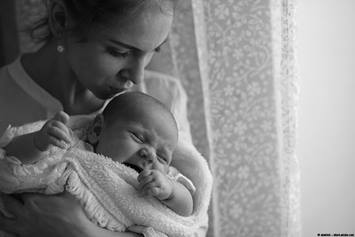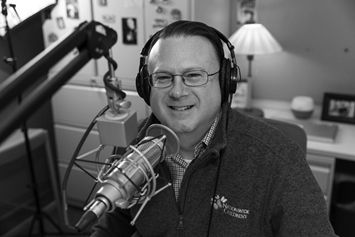Hirschsprung Disease
Hirschsprung disease is a condition you are born with, which causes blockage of the intestine.
What Is Hirschsprung Disease?
Hirschsprung disease is a condition you are born with, which causes part of the intestines to not work properly. The reason for this is a lack of nerves in the affected segment of the colon and sometimes the small intestine also. These nerves normally allow the muscles in the wall of the bowel to contract and relax in an organized way thus moving digested material downstream toward the anus, so the child can eliminate his or her waste.
Hirschsprung disease occurs in one out of every 5,000 live births. The disease occurs more often in males than in females, and sometimes can be associated with inherited conditions, one common example being Down syndrome. Hirschsprung disease, also known as megacolon, is a congenital (happening before birth) condition in which nerve cells in the wall of the intestine do not develop properly. These nerves are responsible for the wave-like motion that helps push food through the intestines so that it can be digested and passed out of the body as stool. Patients with Hirschsprung disease also have an abnormal involuntary anal sphincter which does not relax normally during defecation. This may lead to difficulties with stooling after pull through surgery.
A child’s large intestine is about four feet long – and Hirschsprung disease can affect either a small or large portion of the organ. The condition occurs most commonly in the rectum or the sigmoid colon, which is the very last part of the large intestine before stool reaches the anus.
Children with Hirschsprung disease will always need surgery to remove the non-functional segment of the intestine, and to restore the ability to push stool through the digestive tract and out of the body. With proper surgical intervention, the long-term outcomes for children with Hirschsprung disease are excellent, and most will go on to recover normal bowel control and function.
What Are the Symptoms of Hirschsprung Disease?
Most children with Hirschsprung disease have symptoms within the first few days and weeks of life. Symptoms depend on how much of the intestine is affected. Children with a very short segment of involvement may not show symptoms for several months or even years, while those with longer lengths of abnormal intestine become sick very quickly.
The most common symptoms in infants include:
- The absence of a bowel movement in the first 48 hours of life
- Distension (bloating) of the abdomen
- Vomiting (the color of bile, which can be dark green to yellow brown)
- Fever
- Diarrhea
Older children may have these symptoms:
- Sepsis (a severe infection)
- Severe Constipation
- Watery stools
- Loss of appetite
- Delayed growth (failure to thrive)
How Is Hirschsprung Disease Diagnosed?
While most children with Hirschsprung disease are diagnosed during infancy, some children may not be diagnosed until adolescence or rarely, young adulthood. Doctors perform several tests to confirm a diagnosis, and different studies may be used depending on your child’s age. Most of these tests are not painful, and do not require sedation or an overnight hospital stay.
- An abdominal X-ray is used to identify any intestinal dilation.
- A contrast enema is a special type of X-ray of the colon that shows the doctor which part of the colon is abnormal. This X-ray also helps your child’s surgeon plan the surgery.
- Anorectal manometry uses a small balloon to record pressure changes within the rectum, and determines if the anal sphincter is functioning normally. This procedure is typically used in older children.
- A rectal biopsy is a test that takes a small bit of tissue from your child’s rectum (the lowest part of the large intestine) so doctors can look at it under a microscope. The biopsy lets the doctor examine nerve cells in the tissue sample and establishes the diagnosis of Hirschsprung disease. If this biopsy is inconclusive (sometimes the sample is too small), then a second biopsy will be done in an operating room.
How Is Hirschsprung Disease Treated?
Treatment for Hirschsprung disease depends on the severity of the disease and your child’s overall health. All children with the condition undergo procedures that help eliminate static stool, and ultimately, surgery to remove the portion of the intestine that is malfunctioning.
Most children who have treatment and surgery do very well and go on to have normal, healthy bowel function.
Irrigation to Flush the Intestines
As a first step, doctors will irrigate the bowel to remove trapped waste and gas. The irrigation is done by inserting a tube through the anus to flush out the colon. In most cases, this successfully clears the intestines and provides immediate relief to the child. These irrigations are continued until surgery can be done.
Sodium Supplementation
Some patients, particularly those whose entire colon is affected by Hirschsprung disease, may need an ileostomy for many months and sometimes years.
The ileostomy can cause the body to lose sodium, something that your child needs in order to absorb nutrients from what they eat. For that reason, children with an ileostomy are often prescribed sodium supplements by their doctor. Doctors will also monitor your child’s growth carefully to make sure that they are getting the nutrients they need to develop normally.
Surgery
The goals of surgery are to remove the abnormal part of the intestine, and to reconnect a healthy part of the intestine to the anus so that the body can pass waste normally. In most cases, the rectum and the sigmoid colon (the last parts of the large intestine) will need to be removed. A very key technical aspect is to preserve the anal canal and anal sphincters which comprise the continence mechanism.
Surgery is typically performed on a healthy infant that has responded well to bowel irrigations. The operation performed while your child is under anesthesia involves both laparoscopic and transanal surgery. This allows the surgeon to reach the bowel through three or four tiny (3-5 mm) incisions on the abdomen (stomach area). This approach is minimally invasive and helps reduce recovery time.
In rare cases, if a child is very ill from enterocolitis (intestinal infection), and irrigations are not working, an ileostomy or colostomy is performed. These ostomy procedures collect waste from the small or large intestines and channel it into a bag attached to the child’s side. This is a temporary measure (lasting from a few months to a few years) which allows the child’s intestines to heal until surgery can be performed.
Your doctor will give you detailed information about how to manage your child’s ostomy.
What to expect after surgery?
You can expect your child will remain in the hospital for about three to seven days after their procedure, but some children may need to stay longer, depending on the severity of their disease. Your child will be given IV fluids to help maintain hydration and pain medication as needed while they are in the hospital.
The skin around your child’s anus will need special care once you get home. Your child is likely to pass several stools a day, which can cause the skin to become very irritated. Your healthcare team will talk to you about what types of topical medicine you can use to help protect your child’s bottom.
Your surgical team will also advise you on how to keep any abdominal incisions clean and dry before you leave the hospital.
Long term complications
While surgical outcomes are generally excellent, intestinal infections can occur even after surgery. This type of infection is called enterocolitis. It is not clear why these infections happen, but they usually stop as the child gets older. They are readily treated with irrigations and antibiotics.
Constipation is another potential complication but can be managed with diet and laxatives.
In rare cases in which a child cannot control their bowel movements, a bowel management program can help them achieve cleanliness and prevent accidents.
Post pull-through problems in patients with Hirschsprung Disease
Surgical treatment for Hirschsprung disease has developed over the years, and there are several ways a surgeon can do a “pull-through”, which means to remove the non-functioning portions of the bowel, and pull-through the healthy segment above the problematic section at the bottom.
The Center for Colorectal and Pelvic Reconstruction at Nationwide Children’s has the most experience in the world managing Hirschsprung patients with post pull-through problems from outside providers, many of whom need a reoperation of the original pull-through. Patients from medical centers worldwide are referred to CCPR to try to find an explanation and a treatment for their post-pull through problems.
Such problems come in two forms. Patients either suffer from soiling (fecal incontinence) or they can suffer from episodes of abdominal distention which can lead to severe diarrhea episodes called enterocolitis.
Our doctors have developed a protocol for evaluating and diagnosing these problems. In over 90% of cases the problems are fixable with a combination of medical and surgical management.
We first start with a detailed history, asking about bowel habits, documenting episodes of constipation, soiling, or distension. We want to know how the child is eating and whether they are growing. We need to know what medicines have been used in the past, such as medicines to treat diarrhea (anti-motility agents) or constipation (laxatives or stool softeners), or if the child has needed colonic irrigations or dilations. It is also vital to know exactly what type of Hirschsprung operation was done originally. (Soave, Swenson, Duhamel).
After this history, patients are examined under anesthesia. On this exam, we need to determine:
- How is the anal canal? It is intact for its entire circumference?
- Is there a narrowing of the pull-through (stricture) that could block exit of stool?
- How are the anal sphincters?
- Is there a pouch of the rectum (related to a Duhamel procedure)?
- Is there a cuff one can feel outside of the pull-through (related to a Soave procedure)?
- How are the nerves in the bowel at the bottom of the pull-through? Is there any Hirschsprung tissue left behind? (We determine this by doing a biopsy and analyzing the tissue under a microscope.)
This investigation with the reported medical history helps to divide patients with post-operative issues into two groups:
- Those who are soiling or fecally incontinent
- Those who have repeated episodes of obstruction which manifests as abdominal distention and enterocolitis
Incontinence Can Be Managed
Fecal continence is the ability to have voluntary bowel movements without soiling and without the need for enemas. Ideally, fecal incontinence should not occur after a pull-through.
If a patient after a Hirschsprung pull-through is soiling, the key first step to evaluate this problem is to determine whether the patient’s anal canal and sphincters are intact and whether the remaining colon moves too slow (hypomotile) or too fast (hypermotile). Learn more about our Bowel Management program.
Obstructive Symptoms Can Be Fixed
Reoperative (re-do) surgery for distention and enterocolitis
If after a pull-through for Hirschsprung disease a patient develops repeated episodes of abdominal distention, this may mean they are not adequately emptying the stool. This can lead to a dangerous condition called enterocolitis, in which the child can get severely dehydrated. When stool does not move through the colon, stasis of stool develops, which allows the bacteria in the colon to grow (bacterial overgrowth) which leads to diarrhea, similar to what happens in a pond as compared to a flowing stream. If this is more chronic and occurs over many years, the child's growth can be affected, which is called failure to thrive.
If enterocolitis occurs in repeated episodes, after a year of age, or after 6-12 months following the pull-through, the cause could be due a problem with the anatomy of the end of the pull-through or could be related to a problem with the nerves at the end of the pull-through. In such a case, assessment begins with the patient’s medical and surgical history, and evaluation of the anatomy under anesthesia.
We want to find the underlying cause of the abdominal distention and figure out why the pull-through does not empty well.
The possible pathology explanations are that the segment at the bottom either has no nerves, or has a section of bowel that was the transition between normal and abnormal nerves (transition zone). Just like with a newborn with Hirschsprung disease, if there is bowel without adequate or normal nerves, that segment of bowel will not function and the bowel above this area will therefore not be able to empty leading to abdominal distension. This is a set up for enterocolitis. A rectal biopsy is performed to detect these problems.
Problems with the pull-through anatomy can result in enterocolitis and can be related to the initial operation. Causes for this can include a narrowing of the end of the pull-through (stricture), a twist or kink of the pull-through, a cuff related to the Soave procedure which compresses the end of the pull-through, a large pouch related to a Duhamel procedure, rarely a segment of bowel with normal ganglion cells that doesn’t function well due to abnormal motility. Each of these can be observed on a contrast enema or in the case of dysmotility will require testing call anorectal manometry..
All these problems can be corrected with a redo operation, which involves a transanal removal of the end of the pull-through which is problematic and pull through of the segment of bowel above this area that is functioning well. With such a redo pull through obstructive symptoms resolve in almost all cases.
At Nationwide Children’s, every child diagnosed with a colorectal condition is handled with an individualized treatment plan. For more information or to request an appointment, please contact us.
Why Nationwide Children's?
The Center for Colorectal and Pelvic Reconstruction (CCPR) at Nationwide Children’s Hospital is the country’s leading Center for children diagnosed with Hirschsprung disease and other complex colorectal conditions. At the CCPR, our experts come together from all specialties that could be needed by our patients including colorectal surgery, gastroenterology, urology and gynecology.
Studies show that there is a direct correlation between the number of patients a clinical program sees and high-quality outcomes they deliver to their patients. Since our inception in 2014, we have treated more than 3,000 patients from all 50 states and 73 countries. We see patients with all levels of complexities, but are especially focused on helping patients that have not been able to find help elsewhere, whether for second opinions or corrections from previous surgeries. Hundreds of patient families also attend our Bowel Management Bootcamp each year.
Every child we see is given an individualized treatment plan that can span throughout their life - from newborn, through potty training, puberty, sexual function and childbearing.



